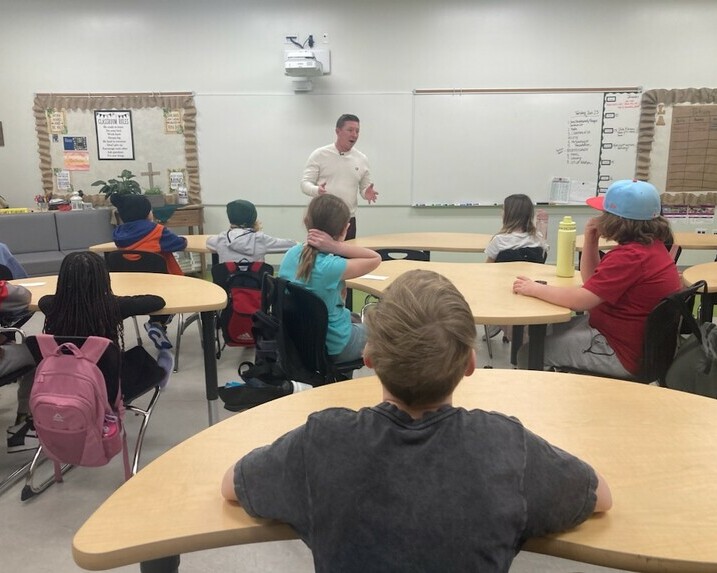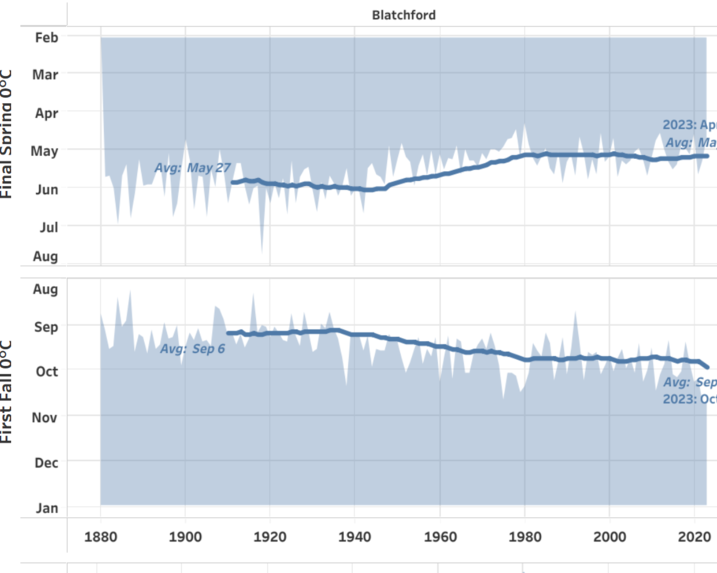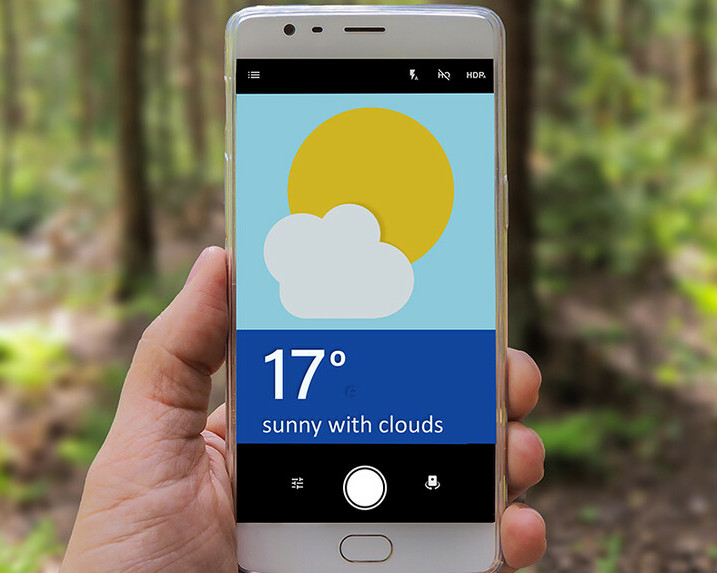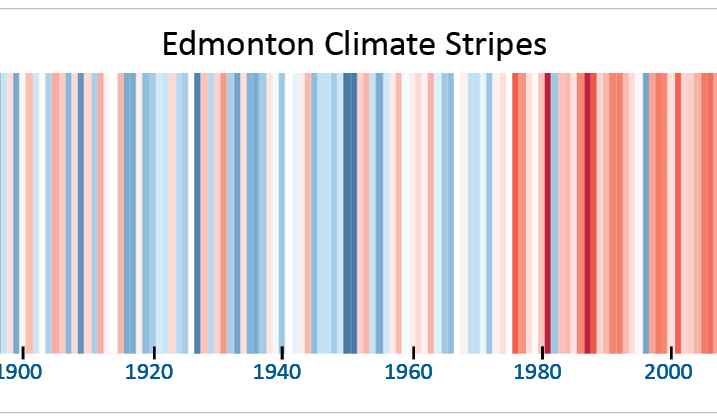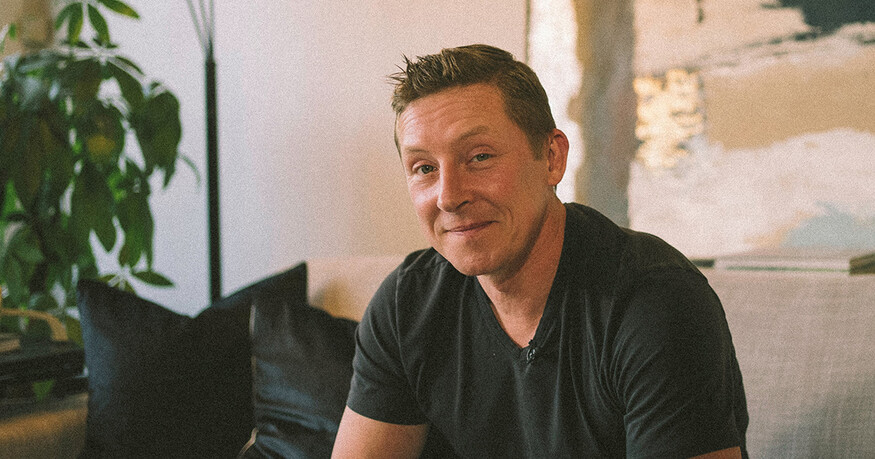
Canadians love to discuss weather, so we launched our series on the topic of drought by talking to local weather forecaster and TV personality, Josh Classen. Read more on Josh’s thoughts (and stats!) about his evolving field, El Niño, climate change, and drought in Alberta.
Nobody could have forecast the sunny career Josh Classen has enjoyed as a TV weatherman and meteorologist. Born and raised in Lloydminster, Classen says he was calling his brother’s hockey games when a few people suggested he become a sports broadcaster. After finishing a degree at NAIT, he returned to a job in his hometown, where he soon discovered he wasn’t cut out for news reporting. “But I was lucky enough to get a weather job. Even though I didn’t know anything about the weather,” he adds with a laugh.
In his early days as a weather forecaster, Classen would call a briefer at Environment Canada and they would tell him what to say. This led to a job with Global TV in Saskatoon for five years. While there, Classen lived about six blocks away from the Environment Canada office and the staff there taught him a lot about weather. Like many other weather presenters, Classen then trained in Broadcast Meteorology at Mississippi State University. Following a stint at Global TV in Toronto, he returned to Edmonton as CTV Edmonton’s chief meteorologist and has worked in Alberta’s capital city for the past twenty years. Classen’s approachable and upbeat style has earned him numerous Readers’ Choice awards in the St. Albert Gazette and the now defunct SEE Magazine as Favourite TV Personality and Weather Forecaster. He was also named to Avenue Magazine’s Top 40 under 40 in 2011.
THE EVOLUTION OF FORECASTING: FROM 'WHY' TO WEATHER APPS
Looking back at the early part of his 27-year career, Classen says his limited weather knowledge wasn’t a hindrance because “we wouldn’t really talk about why things were happening with the weather.” Over time, it became more popular for TV stations to have meteorologists, who would discuss the causes and details about the drivers behind specific weather patterns.
There are many variables that need to be considered when putting a forecast together and Classen says that while weather apps can be great, “they’ve done a real disservice to forecasting. Anyone can find the numbers and icons of weather through their phone,” but Classen says that computer generated forecasting apps don’t necessarily factor in the uncertainties that can occur between the given forecast and what actually unfolds. His work is more nuanced and can explain in more detail when that rain or snow may arrive and why the certainties or uncertainties exist.
BROADENING THEIR SCOPE: METEOROLOGISTS TALK WEATHER IMPACTS TO SOCIETY
In the last decade, meteorologists have also broadened the scope of what they discuss to include weather impacts such as flooding, excessive temperatures, and air quality. Classen notes, “The first 10 years being in Edmonton, I don’t ever remember talking about air quality from wildfires or smoke forecasting.” Classen says in the past five or six years, the weather team uses graphics on an almost daily basis in the summer to talk about smoke forecasting, wildfire outlook, and air quality because of the wildfires. An unusually dry fall throughout Alberta has resulted in 64 fires still currently active in Alberta (as opposed to a handful, typically).
EL NIÑO 2023: HEAT & DROUGHT
With 2023 being the first full El Niño year since 2018-2019 and eighth since 2000, Classen says, “El Niño has put a real fingerprint on this year’s temperatures and is expected to last into the spring.” He emphasizes that this will put 2023 as the warmest year globally since records began 174 years ago. Classen explains that the models are showing that spring will either transition out of El Niño & into “neutral” conditions or even snap into La Niña patterns over the summer. However, even after the El Niño conditions are no longer being met in the ocean, there can be a lag effect, meaning that 2024 could surpass 2023 temperature-wise.
The drier and warmer El Niño conditions usually experienced in Alberta are often most felt during the winter months when there is low snowfall for the following spring runoff, according to Classen. Southern and Northern Alberta are already feeling the pinch of dry conditions and the province is warning municipalities about potential water shortages this year. Two of our fellow southern WPACs (water advisory councils) have expressed their concern about current water levels in the Oldman and Bow River basins.
HISTORICAL STATS, WARMING TRENDS & MOISTURE
Classen did some digging to see how things have changed over time with our local and global climate. One notable shift is that “in the last 50 years, most months have gotten a lot warmer than historically in Edmonton and most other regions around the province. Another noteworthy trend for the capital region is the number of days the temperature has gone above 20oC. Classen points out how from the 70s to the early 2000s, there’s been an extra two or three days over 20. While that may not sound like a lot to most people, Classen explains, “To throw a 30-year average out by two days – it takes a lot to move that number.”
Classen sums up the rising local temperatures, saying, “We don’t set record lows anymore. Since 2000 [within the City of Edmonton], we’ve only had six record lows and we’ve had 72 record highs. So yes, it’s getting warmer, which climatologists have been telling us was going to happen since the 1960s and 1970s. And now it’s here.”
As for global temperatures, Classen explains, “The 10 hottest years globally are the last 10 years. Not perfectly sequential, but the 10 hottest are the last 10 years. And it looks like 2024 will move into that top spot as well.”
On moisture and precipitation levels: “The past 365 days around Edmonton and west and northwest are not that bad, but the past 90 days (from September to December) have been brutal. But if you look at the last 365 days for southern Alberta, east central Alberta, northeastern Alberta, it’s more like a once-in-a-century type drought that we’re dealing with there.”
While the overall precipitation levels may not look that bad for our region, it’s often about timing and amounts. The lack of fall rain or snow combined with higher evaporation rates (due to higher than average temperatures) could mean drier soil conditions for the spring. More frequent heavy spring rains cause more runoff and flooding. Freezing rain are a more common occurrence in recent winters.
Classen says given that we’re still in an El Niño pattern, it’s unlikely that we’ll see much snow this winter. However, he points out that snow is about a 10:1 ratio in that we only get about 1 mm of moisture from 1 cm of snow. He said we’re better off hoping for “some good steady consistent spring rain” which could happen if we move into more of a neutral or La Niña pattern.
TALKING DROUGHT
Although drought wouldn’t be something Classen would address regularly because of his limited on-air timeframe, he might tip off the newsroom if it is something that needs more coverage. Nevertheless, any extreme conditions would inform how he delivers a forecast. “If it rains, and you’re in a drought, you wouldn’t say, ‘Oh, it’s going to rain and ruin everybody’s day. Instead, you say, ‘Hey, this is good!’”
Classen doesn’t tend to label what is coming as good or bad, but instead sticks to the facts. “What one farmer may want could be different from what the other wants.” And he does try to consider that he’s not just “serving the urban population”. He uses the example of an urban person who is disappointed that they can’t go outside for the farmer’s market due to rain, while the farmer who is providing the goods for the market may in fact need the rain.
UN Calls Climate Change a ‘Water Crisis’
When asked about the statement by the UN, “Climate change is primarily a water crisis,” Classen says he’s familiar with the statement. “Most people think about climate change in terms of temperatures, and it is getting warmer. They may slough that off and say, ‘Oh, well, I don’t mind it, if it’s a little bit warmer in the wintertime.’ I don’t think that the general public understands what those warmer temperatures will do to water scarcity, which leads to food scarcity, and rising sea levels rushing inland and contaminating groundwater. Also, the impacts on typical annual precipitation and what that does to arable land.”
Classen regularly visits Grade 5 classes throughout the capital region to talk to them about weather. He has noticed that this younger generation tends to be more interested in the big picture topic of climate change and its consequences than they are in day-to-day weather. It makes sense given that these kids will live out their lives in an era when the effects of climate change will be more pronounced.
As for the critical relationship between climate change and water, Classen concludes, “I would wholeheartedly agree that water does seem to be a big issue here,” and adds, “It’s a big one to wrap our heads around.”
LEARN MORE
- To follow Josh Classen on X/Twitter or read his weather articles
- Check out cool data visualizations about weather around Edmonton (and other places)
- Stay current on drought conditions at the Canadian Drought Monitor
- Read the UN’s statement about water and climate change
